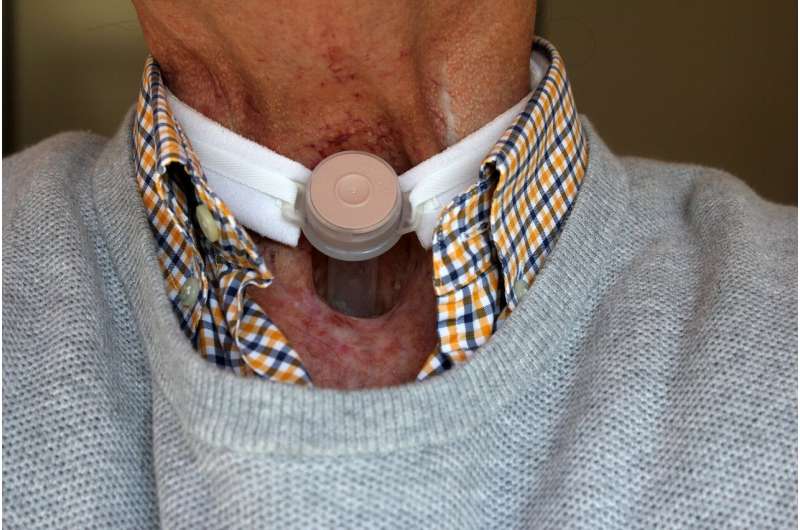Q&A: treating vocal cord cancer

DEAR MAYO CLINIC: My brother was diagnosed with stage 0 squamous cell carcinoma in situ in one of his vocal cords. He has been through several endoscopic surgeries, but the carcinoma keeps coming back. His doctors do not recommend radiation therapy. Are more surgeries the answer, or are other treatments available?
ANSWER: For your brother's condition, surgically removing the affected tissue is the best approach. Radiation therapy is not likely the answer for carcinoma in situ. That's because the treatment carries more lasting side effects than surgery. And because of those side effects, radiation therapy cannot be used multiple times in this sensitive area, so typically radiation is reserved for more invasive cancer that involves more of the voice box.
The voice box sits just below your throat. It's made of cartilage and contains your vocal cords, which vibrate to make sound when you talk. Cancer that begins in the vocal cords is a form of throat cancer that's called "glottis cancer." "Carcinoma in situ" is a term used to describe cancer at its earliest stage—stage 0. This form of cancer is confined within the cells and has not spread beyond them.
Carcinoma in situ within the vocal cords often is treated surgically using endoscopy. The procedure involves inserting a hollow endoscope into the mouth, and then passing special surgical tools or a laser through the scope. Using these tools, the surgeon can scrape off, cut out or—if a laser is used—vaporize the affected cells. In a case such as your brother's, where carcinoma in situ recurs, the endoscopy procedure can be repeated as many times as necessary, as long as the cancer continues to be limited to a small area.
If the cancer spreads, radiation therapy may be appropriate at that time. Endoscopy is the preferred treatment versus radiation therapy for carcinoma in situ that affects the vocal cords because the surgery poses fewer risks. Many people who receive radiation therapy in the neck and throat develop painful sores in the mouth and throat that can make eating and drinking difficult. This can lead to weight loss and malnutrition. The sores heal with time after the radiation therapy is complete, but some people continue to have problems swallowing after the treatment is finished and the sores are gone.
Chemotherapy is not recommended for carcinoma in situ because in almost all cases the side effects outweigh any benefits a patient may see from that type of treatment. In addition to endoscopy, treatment for carcinoma in situ also includes avoiding anything that could irritate the vocal cords and potentially contribute to the development of the carcinoma. For example, many throat cancers, including glottis cancer, are closely linked to smoking. Not everyone who develops this type of cancer is a smoker.
But for those who are, quitting smoking is crucial. Not only does smoking increase the risk of the cancer coming back, it can make cancer treatment less effective. Smoking also makes it harder for the body to heal after treatment.
Excessive alcohol use can contribute to the development of throat cancer, too, especially if it's combined with smoking or chewing tobacco. People diagnosed with throat cancer are strongly encouraged to avoid drinking any form of alcohol. It's important for individuals diagnosed with carcinoma in situ that affects a vocal cord to work closely with their medical team to develop a treatment plan and set up a schedule to regularly monitor their condition. That way, if the cancer recurs or spreads, it can be treated promptly.
©2019 Mayo Foundation for Medical Education and Research
Distributed by Tribune Content Agency, LLC.















